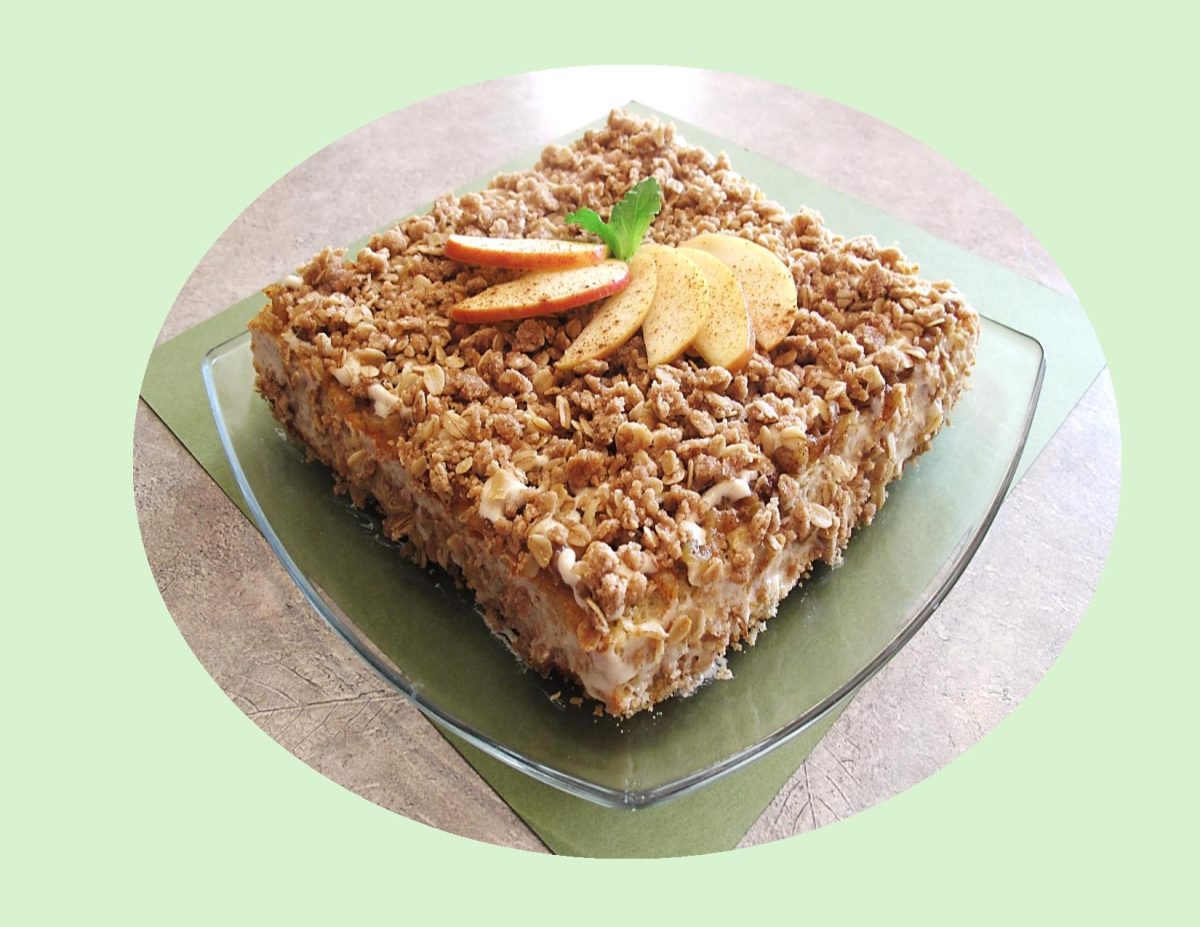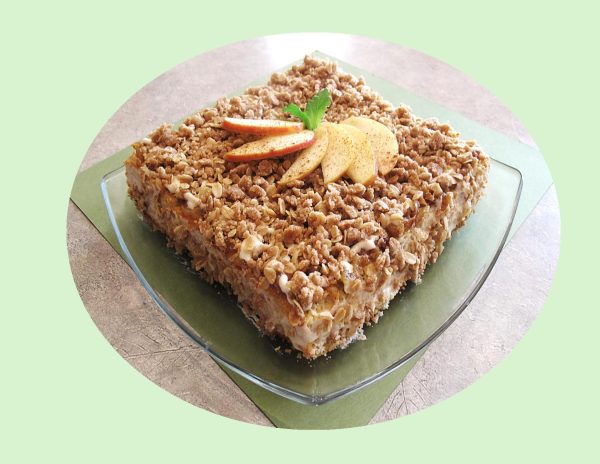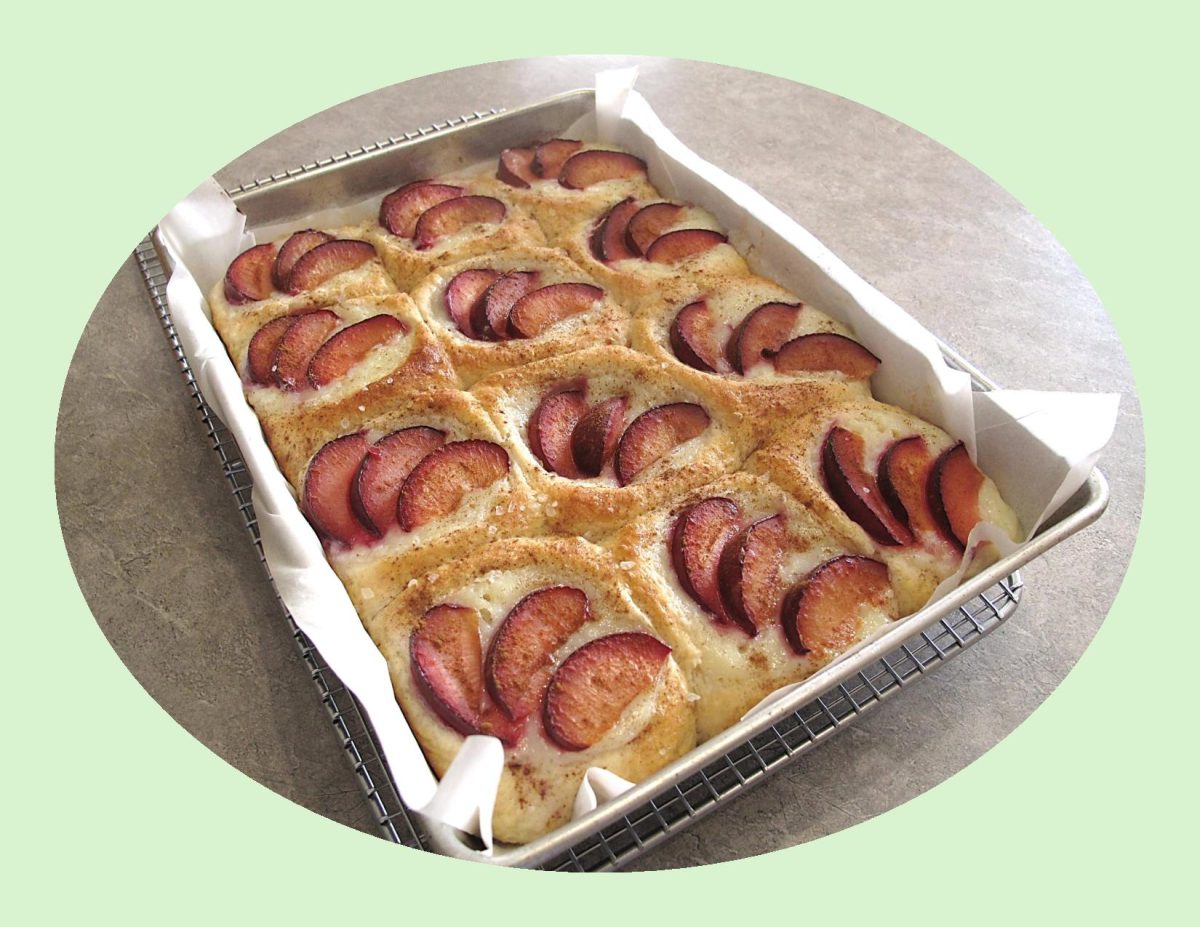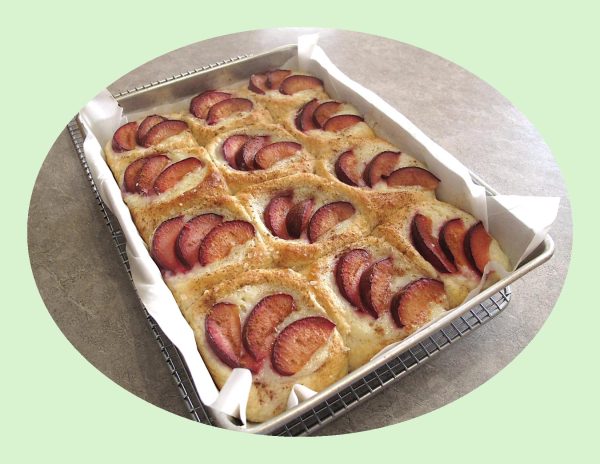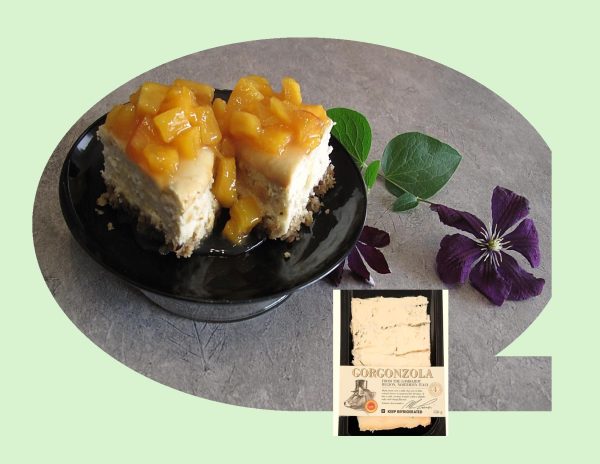
Cheese might not be the first thing that comes to mind if you’re looking for a satisfying, easy, elegant way to end your meal, but it makes for a fabulous dessert. Europeans have long served dessert cheese, either after the salad or after the main course.
While a sweet cheesecake can be a thing of great joy and incredibly versatile; there are various regional styles, easy no-bake versions for when you don’t want to turn on the oven, and many ways to make it suited to all seasons by switching up the flavor. But there’s a whole other avenue to explore too: savory cheesecakes, a great appetizer option for any party, or even weekday dinner for your family. If it sounds a little weird, think of it like a cheesier, less eggy version of quiche.
As with sweet cheesecakes, there are both baked and no-bake versions of savory cheesecake, some with crusts and some without, but crusted and baked seems to be the most prevalent sort, and the vast majority of those follow a similar formula.
Brion & I have never been much for ‘blue cheese’ but when it comes to Gorgonzola, that’s a whole different story. Gorgonzola is a type of blue cheese produced in Northern Italy. It’s creamy and crumbly and has streaks of blue mold that give it a strong, piquant flavor. This savory Gorgonzola cheesecake could be served as a cheese or dessert course with fresh fruit to end a nice summer evening meal. A simple recipe with a taste that lingers long in the memory.
Print Recipe
Savory Gorgonzola Cheesecake w/ Peaches & Hemp Heart Granola Crust
Votes: 1
Rating: 5
You:
Rate this recipe!
|
|
Votes: 1
Rating: 5
You:
Rate this recipe!
|
Instructions
Base
Line 2 - 5-inch springform pans with parchment paper. Place granola in a food processor; process until fine crumbs form.
In a bowl, mix crumbs & melted butter until well combined. Divide crumb mixture between the two lined pans; press into the bottom to form the crust. Set aside.
Peach Topping
Add peaches to a medium saucepan over medium-high heat; stir in lemon juice, water & cornstarch. Bring mixture to a rolling boil. Stir in sugar. Return to a gentle boil for 1-2 minutes, stirring frequently, until peaches thicken slightly. Remove from heat & cool completely. This can be prepared after you bake the cheesecake if you wish.
Cheesecake
-
Using an electric mixer, beat cream cheese & Gorgonzola in a bowl until light & fluffy, about 5 minutes. Add sour cream, honey, salt & pepper; beat until blended. Add eggs one at a time, mixing well after each addition. Divide cheesecake batter, pouring over the granola base in each of the springform pans.
Bake for 1 hour & 20 minutes or until set & lightly browned.
Remove cheesecake from oven & cool to room temperature. Cover with plastic wrap & refrigerate for 4 hours or overnight. Spoon peach topping over cheesecake, slice & serve.
Recipe Notes
- If you wish to make one 9-inch cheesecake, double ingredients but only use 3 large eggs. You should have enough peach topping for a 9-inch without having to double that recipe.
- For this recipe I chose not to prebake the hemp heart base but If you wish to do so there is no problem in with that.
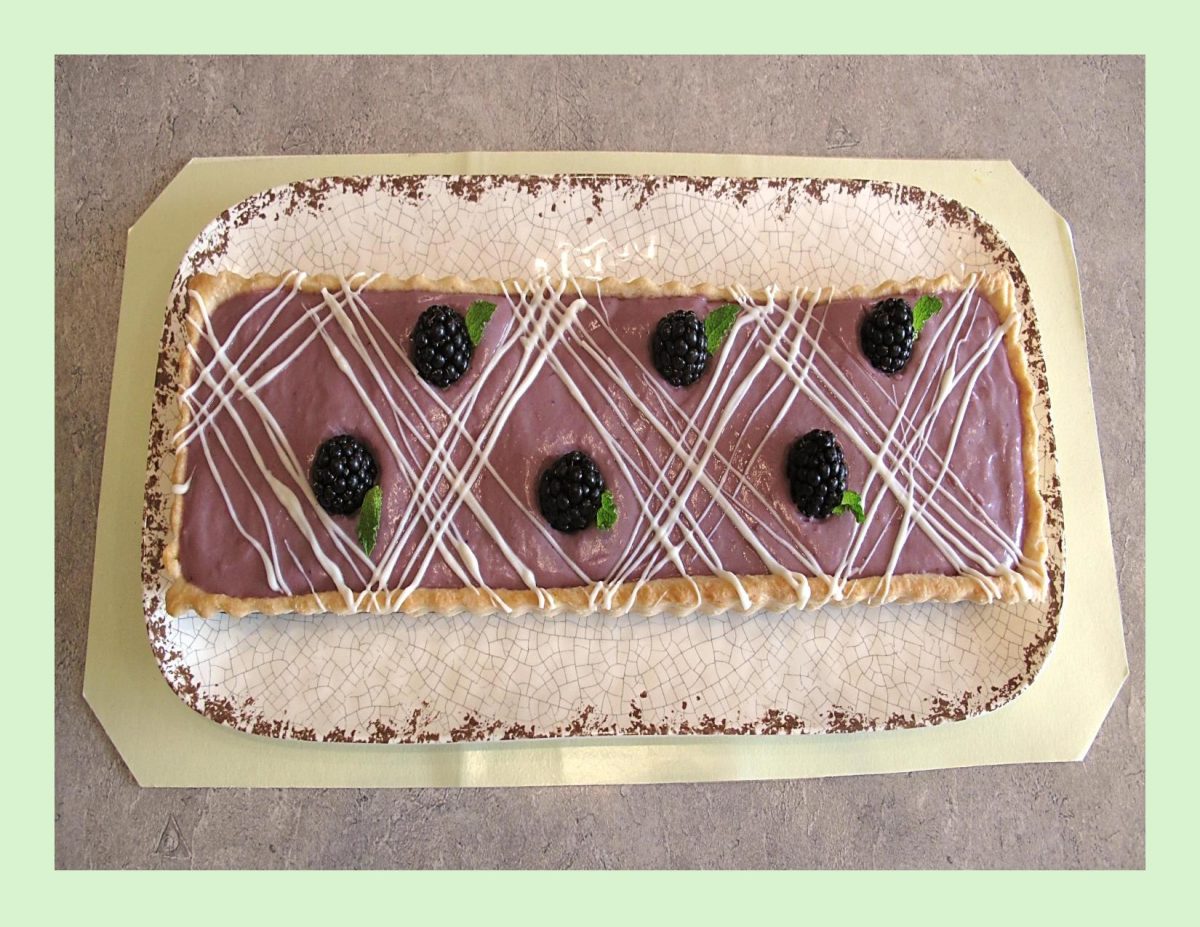
To the younger generation, the word ‘blackberry’ probably only brings to mind a variety of gadgets, but to those who remember when there were no mobile phones in sight or in hand, the blackberry is first and foremost that small, ripe, juicy fruit that makes excellent pies, jams, jellies and wines.
Over 12 species of blackberries grow in woods and clearings in Canada, mainly in eastern provinces and southern British Columbia. Worldwide, Mexico is the leading producer of blackberries, with nearly the entire crop being produced for export into the off-season fresh markets in North America and Europe.
Although nowadays blackberries are primarily used in cooking, they are known to be very beneficial to health. Having one of the highest antioxidant contents of all fruits, blackberries are good for lowering cholesterol levels, support oral health, strengthen bones, regenerate the skin and aid the digestive system.
Today, I thought I’d incorporate them in a custard tart decorated with some white chocolate. The blackberries not only add color but with their deeper, darker, more complex tart/sweetness, add something very special.
Print Recipe
Blackberry White Chocolate Tart
Votes: 1
Rating: 5
You:
Rate this recipe!
|
|
Votes: 1
Rating: 5
You:
Rate this recipe!
|
Instructions
Pastry
In a food processor, pulse flour, sugar, salt & baking powder to blend. Add butter & pulse 3-4 times, until butter is in pea-size pieces. Sprinkle in the ice water; pulse another 4 times. Turn dough out on a lightly floured surface & knead gently a few times to form a disk. Wrap in plastic wrap & refrigerate for at least an hour.
Custard
In a saucepan, cook blackberries over low heat, stirring frequently, until berries break down & sauce begins to boil. Cook until sauce begins to thicken, 7-10 minutes. Remove from heat, strain through a fine mesh sieve, pressing on solids & discarding seeds & solids. Reserve blackberry juice.
In a small saucepan, whisk together 1/2 & 1/2 cream, sugar & salt. Bring to a boil over medium heat, stirring frequently.
In a medium bowl, whisk together egg yolks, cornstarch & cinnamon (or ginger). Slowly add half of the 1/2 & 1/2 mixture, whisking constantly. Add egg yolk mixture to remaining 1/2 & 1/2 mixture in saucepan & bring to a boil over medium heat. Cook, stirring constantly, until thickened, 2-3 minutes.
Remove from heat & whisk in butter & vanilla until butter is melted then whisk in reserved blackberry juice. Pour into a heatproof bowl, cover with plastic wrap, pressing wrap directly onto surface of custard to prevent a skin from forming. Allow to cool completely.
Baking
On a lightly floured surface, roll chilled pastry to 1/8-inch thickness. Transfer to a 14 x 4-inch rectangular tart pan. with a removeable bottom. Freeze for 15 minutes.
Top crust with a piece of parchment paper, letting ends extend over edge of pan. Add pie weights. Bake until lightly golden around edges. Carefully remove paper & pie weights. Bake until lightly golden & surface is set. Let cool completely.
Decorating
Whisk chilled blackberry custard then place into cooled prepared crust. Smooth with a spoon or an offset spatula. Melt white chocolate & place in a small plastic baggie. Snip off the tip of one corner of the bag. Drizzle the chocolate in parallel lines. Top with a few fresh blackberries & small mint leaves, then carefully place tart on a serving tray. Refrigerate until serving.

REMEMBERING LORETTA!
Today, July 25, would have been my sister Loretta’s 81st birthday. Over the years I have shared many experiences on the blog that I had enjoyed with Loretta. She was an avid follower of the blog and always encouraged me to keep writing. In February of 2023, Loretta’s time on this earth ended. Loretta was a beautiful melody in the rhythm of my life. Her passing has left such an empty place in my heart.
The phrase ‘too much of a good thing’ is certainly not true when it comes to the many memories we shared. I will always give anything to recollect and relive the memories we created together.
She was a constant in my life during her lifetime. Loretta was so much more than just a sister to me. Only her love, kindness, and the memories we shared can bridge the gap between the departure of her passing.
Loretta was a very kind, gentle soul. She was a sister, mother, grandmother, great grandmother, friend and professional health care worker as well as many other things she did with such love and compassion.
I wanted to make something special on the blog to honor her memory. This rhubarb cream tart w/ strawberry meringue seems fitting since she loved rhubarb.
Print Recipe
Rhubarb Cream Tart w/ Strawberry Meringue
Votes: 2
Rating: 5
You:
Rate this recipe!
|
|
Votes: 2
Rating: 5
You:
Rate this recipe!
|
Instructions
Stewed Rhubarb
Place the rhubarb, sugar, salt, & 1/4 cup of the water in a small saucepan. Bring the mixture to a boil & reduce it to a simmer. Simmer until the rhubarb falls apart.
When the rhubarb is just about done, take a small bowl & whisk to combine the remaining water & the cornstarch. Stir the mixture into the simmering rhubarb & continue to stir until the mixture becomes thick & glossy. Take it off of the heat & let it cool.
Pastry Cream
Pour the 1/2 & 1/2 cream, sugar, & salt into a small saucepan & place over medium-low heat. Heat the cream until steam begins to gather on the surface & it's on the verge of boiling.
While the cream is heating up, whisk to combine the egg yolks & cornstarch. Once the cream is hot, add a few ladlesful of the cream mixture to the yolk mixture while whisking constantly to temper the eggs. Pour the yolk mixture into the saucepan & cook over low heat until the cream thickens & becomes glossy.
Take the pastry cream off of the heat & add the butter. Stir until the butter melts. Pour the cream into the tart shell & add the stewed rhubarb on top. Cover & let chill for 3 hours or until set.
Strawberry Meringue
Place the water, sugar, & strawberry powder in a small saucepan and bring it to a boil. Once the mixture is boiling don't stir it anymore. Heat the mixture until it registers a temperature of 230-240°F on a candy thermometer.
While the sugar mixture is heating up, whisk the egg whites & cream of tartar on high using a hand mixer or a stand mixer until soft peaks form.
With the mixer running, stream the hot sugar mixture into the egg whites. Continue to whisk until stiff peaks form.
Place the strawberry meringue on top of the set rhubarb custard tart. Toast the meringue with a kitchen torch or leave to as is.

Since stone fruit is so gorgeous when in season, why not make a fruit tart? Not just an ordinary fruit tart, but one bursting with an array of colorful fruit and roasted to bring out all the natural sweetness.
I like this tart in the fall made with apples, but since we can enjoy the seasons stone fruit bounty right now, let’s take advantage of it. When we were shopping for fruit, we came across some apricots called raspberry apricots. Their flavor is absolutely incredible. Of course the plum/apricot cross (pluots) is pretty special as well. I decided on a nice cinnamon-y pastry to highlight all these wonderful fruit flavors!
Roasting stone fruits concentrates their sweetness and flavor, creating a depth of taste unrivaled by a regular fruit salad. The cornstarch in the filling acts as a thickener to prevent the fruit juices from making the base soggy while it bakes. And the open-faced top exposes the fruit to the oven’s heat, allowing it to caramelize and concentrate its flavor. What’s not to love!
Print Recipe
Roasted Fruit Tart w/ Cinnamon Crust
Votes: 1
Rating: 5
You:
Rate this recipe!
|
|
Votes: 1
Rating: 5
You:
Rate this recipe!
|
Instructions
Crust
In a bowl, combine flour, sugar, cinnamon & salt. Cut in butter with a fork or finger tips to form a crumbly mixture. Drizzle in beaten egg & combine until mixture just begins to come together. Lightly press mixture into the bottom & up the sides of a 14 x 4 x 1-inch tart pan. Chill until firm while you prepare the filling.
Filling
Toss prepared fruit with sugar, cornstarch, lemon zest & juice, vanilla & salt.
Assembly
-
Arrange fruit mixture over pastry in pan. Press down slightly into pan.
Bake until the fruit is soft & cooked through, the fruit juices are bubbling & the crust is a golden brown about 40-50 minutes. Remove from oven & allow to cool for about 20-30 minutes.

Summer pudding is an unbaked bread pudding. The summer part refers to the abundance of fresh berries this time of year, but if you don’t have access to fresh fruit, frozen berries will work fine. For the bread, a cinnamon loaf makes this bread pudding so special.
If you’ve never had summer pudding, now’s the time. It couldn’t be easier to make—start with making a simple fruit compote, then cube your bread and alternate the two in layers. Weight it down overnight and refrigerate. The result is the essence of summer: The bread absorbs the juices from the berries, giving it a vibrant, unforgettable hue.
This is a classic go-to British pudding for a reason; it’s perfect to use up any leftover berries and stale bread for a colorful summertime treat. This recipe calls for blueberries, raspberries, and blackberries, but there are many other choices that will work as well, such as strawberries, loganberries, cherries, or black currants. To make sure that the pudding gets the best texture, seek out a better-quality bread; anything less could result in a grainier, far less appealing texture. It’s perfectly fine, and encouraged, to use stale bread as well.
This is an easy recipe for chilled berry bread pudding that you can prep and cook the day before and refrigerate until it’s time to serve. Summer pudding makes the perfect refreshing summer dessert topped with fresh whipped cream.
Print Recipe
Mixed Berry Summer Pudding
Votes: 1
Rating: 5
You:
Rate this recipe!
|
|
Votes: 1
Rating: 5
You:
Rate this recipe!
|
Instructions
In a medium saucepan, combine sugar & cornstarch; blend well. Add berries; stir. Cook over low heat until mixture boils & thickens, stirring constantly. Remove from heat; cool to room temperature.
Line a 6-cup mold with plastic wrap. Place a small bit of the fruit on the bottom then add a layer of bread cubes.
Pour a small amount of fruit compote over bread. Repeat, alternating layers of bread & compote.
Place plastic wrap over pudding. Cover with a plate that fits tightly inside mold; place a heavy object on top of the plate to mold pudding. Refrigerate overnight. Unmold onto a serving plate & serve with whipped cream. Garnish with mint leaves if desired.





